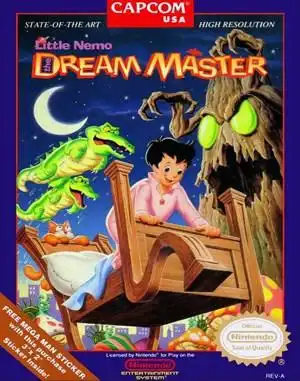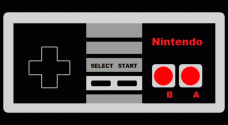Little Nemo: The Dream Master - An Underrated NES Gem
Step back with me for a moment, beyond the iconic plumbing brothers and blue bombers of the 8-bit era. Tucked away in the vast library of the Nintendo Entertainment System lies a peculiar, often overlooked treasure from the masters of action-platforming themselves, Capcom: Little Nemo: The Dream Master.
If you played this game back in the day, you likely remember its vibrant, surreal world and its truly unique gameplay hook. If you missed it, prepare to discover one of the NES's most charming and inventive adventures, a game that deserves far more love than it often gets.
What's the Story, Morning Glory?
Based loosely on the classic Little Nemo in Slumberland comic strip (and the animated film that was contemporary to the game), Little Nemo: The Dream Master drops you into the PJs of young Nemo. He's been whisked away to the whimsical realm of Slumberland and tasked by the Princess with a rather important job: rescue the King from the clutches of the Prince of Nightmares.
It's a simple premise, fitting for the era, but it sets the stage for a journey through some truly imaginative landscapes. Forget generic castles and forests; Nemo's dream world is filled with candy cane forests, mushroom fields, and levels that defy logic in the most delightful ways.
The Dreamlike Gameplay: Candy, Critters, and Keys
At first glance, Nemo seems ill-equipped for heroics. His only ability is to throw candy at enemies, which merely stuns them. Not exactly a powerhouse, right? But here's where Little Nemo: The Dream Master gets clever and sets itself apart.
The core mechanic revolves around befriending the various animals you encounter in Slumberland. By feeding them enough candy, you can temporarily ride them and gain their unique abilities!
- Want to climb walls? Hop on a lizard.
- Need to dig through dirt? A mole is your friend.
- Got a tricky gap to cross? Fly high on a bee or glide with a squirrel.
This transformation system isn't just a gimmick; it's essential. Each level is a sprawling maze requiring you to use different animal forms to reach hidden areas, overcome obstacles, and, most importantly, find the scattered keys needed to unlock the exit door. It feels less like a linear platformer and more like a puzzle-platformer exploration game, a refreshing change of pace for the NES.
A Feast for the Eyes (and Ears): Presentation
Capcom was at the top of their game on the NES, and Little Nemo: The Dream Master is a prime example of their technical and artistic prowess.
- Graphics: The sprites are large, expressive, and beautifully animated. The backgrounds are vibrant, detailed, and perfectly capture the surreal, dreamy atmosphere. From the lush greens of the first level to the abstract patterns of later stages, the game is a visual treat and easily one of the best-looking games on the system.
- Sound: While maybe not as instantly iconic as Mega Man's soundtrack, the music in Little Nemo is excellent. It's whimsical, catchy, and perfectly complements the dreamlike mood of each stage. The sound effects are crisp and satisfying, adding to the overall polish.
Is it Tough? Tackling the Difficulty
Like many NES games, Little Nemo: The Dream Master can be challenging. Nemo is vulnerable when not riding an animal, and managing your candy supply (which depletes as you feed animals) adds a layer of strategy. Enemies respawn, and sometimes finding all the keys in a large level can be tricky without knowing exactly how many you need beforehand.
However, the challenge feels fair. Controls are tight and responsive, a hallmark of Capcom's platformers. With unlimited continues, persistence pays off, and mastering each animal's abilities is incredibly rewarding. It's a game that encourages exploration and experimentation.
Why Play Little Nemo: The Dream Master Today?
So, why revisit this 8-bit curio?
- Unique Gameplay: The animal transformation mechanic is still fresh and stands out even among modern platformers.
- Capcom Quality: It's a polished, well-designed game from a developer known for excellence in the genre.
- Nostalgia (or Discovery): If you played it, it's a great trip down memory lane. If you didn't, it's a chance to discover a true hidden gem you might have missed.
- Artistic Charm: The visuals and music create a captivating, imaginative world unlike most other NES titles.
Finding a physical copy might require a bit of searching and a few bucks, but like many NES classics, Little Nemo: The Dream Master is readily available through emulation, allowing you to easily experience this dreamlike adventure on modern platforms.
Conclusion
Little Nemo: The Dream Master is more than just a licensed game; it's a genuinely creative and expertly crafted platformer that deserves a spot in the pantheon of great NES titles. Its unique mechanics, beautiful presentation, and challenging-yet-fair gameplay make it a joy to play even decades later. If you're a fan of classic Capcom or just looking for an underrated gem to add to your retro gaming playlist, do yourself a favor and dive into Nemo's dream world. You won't regret it.
Frequently Asked Questions
Q: Is Little Nemo: The Dream Master based on the movie? A: Yes, the game is loosely based on the 1989 animated film Little Nemo: Adventures in Slumberland, which itself was based on the early 20th-century comic strip.
Q: How many animal forms are there in the game? A: There are eight different animal forms Nemo can ride, each granting a unique ability like climbing, digging, flying, or attacking.
Q: Is the game very difficult? A: It can be challenging, typical of many NES games. Nemo is vulnerable on his own, and levels require careful use of animal abilities and finding hidden keys. However, unlimited continues make it manageable with practice.
Q: Can I play Little Nemo: The Dream Master today? A: While original cartridges exist, the easiest way for most people to play today is through NES emulation on various platforms.


